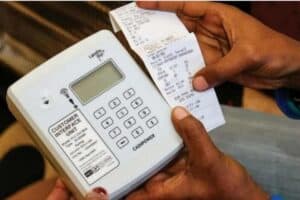The loss was recorded despite a standard tariff increase of 9.61% for the year.

Eskom posted a R23,9-billion loss for the year ending March 2023, the power utility revealed in its financial results released on Tuesday.
The R23,9-billion loss is the largest to date, and is double the R11,9 billion from the previous financial year.
Eskom’s acting Chief Financial Officer, Martin Buys, attributed this to generation capacity shortages and depressed economic conditions among other issues.
ALSO READ: All eyes on Godongwana as Eskom debt grows to R422bn
He said: “These factors have had a direct impact on Eskom’s financial sustainability, requiring us to make difficult trade-offs between liquidity, the utilisation of open-cycle gas turbines (OCGTs) to minimise load shedding for the benefit of the economy, as well as accommodating spend on our operational recovery and capital expenditure programmes.
“In fact, generation supply constraints, arising from both poor plant performance and delays in commissioning new Independent Power Producers (IPP) capacity, had the most significant impact on financial performance for the year.”
The country endured 280 days of load shedding, compared to the 65 days in the previous financial year.
ALSO READ: ‘Have you ever seen such madness?’ – Malema on ‘man-made’ load shedding discrepancies
Eskom’s loss was recorded despite a standard tariff increase of 9.61% for the year, which according to Buys, directly improved revenue.
“However, this benefit was partially offset by a 5% reduction in sales volumes due to the supply constraints,” he said.
Buys noted that Eskom experienced declining sales volumes across every customer segment, except for the industrial and mining sectors, which saw higher electricity demand due to the recovery of global commodity markets.
Primary energy costs grew by 16.6%, with the growth in OCGT expenditure being the biggest contributor, due to a rise in production from Eskom-owned and IPP OCGTs, along with increased diesel prices.
ALSO READ: Eskom still not producing enough power to meet typical demand – energy analyst
“Unplanned breakdowns and load losses also resulted in much higher use of fuel oil for combustion support and the start-up of coal-fired units, along with a growth in repairs and maintenance costs to support the Generation recovery plan and address plant performance challenges,” said Buys.
Eskom debt
Eskom continues to grapple with debt and interest costs, with a growing debt of R423,9 billion recorded, compared R396,3 billion in 2022.
The increase, according to Buys, is due to the weakening of the Rand, which affected foreign borrowing.
In his budget speech earlier this year, Finance Minister Enoch Godongwana announced debt relief of R254 billion over the next three years.
ALSO READ: ‘More time needed’: Experts cautiously optimistic about Eskom’s long-term stability
This includes liquidity support of R78 billion in 2024, R66 billion in 2025, and R40 billion in 2026, along with the takeover of R70 billion in Eskom debt in 2026 to support Eskom’s debt and interest payments as they fall due.
This year, Eskom received debt relief of R16 billion in August, R12 billion on 26 October and R8 billion on 30 October.
Buys said the power utility was working on a turnaround plan to address its debt burden.
One of these plans involved the court challenge against Nersa’s tariffs, which Eskom claimed were not cost-reflective.
“The lack of cost-reflective tariffs and resultant revenue shortfall over the past two decades has been a key contributor to Eskom’s poor financial performance and reliance on debt,” said Buys.
While no adjustment was granted for 2023, Eskom successfully challenged Nersa’s tariffs in court, resulting in announced tariff increases of 18.65% and 12.74% for 2024 and 2025, respectively.
ALSO READ: Eskom on track to end load shedding with another Kusile unit now online
“Although not addressing the lack of cost-reflective tariffs, this decision will help in migrating the tariff path to more appropriate levels and will greatly support our financial sustainability going forward,” said Buys.






